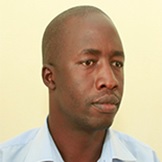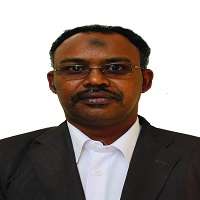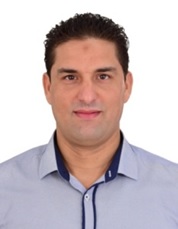Latest Articles
Original Research Article
Design and Development of a Quadruped Spider Robot
Lima Akter, Pronoy Chandra Sarker, Md Gazi Salahuddin, Md Arafat Hossan, Sojib Foysal, Md Jakaria Islam, Md Nafiur Rahman Jamin, Sakibul Hasan, Abir Hasan, Morium Nissa Banna, Nurn Nahar, Abid Hasan
East African Scholars J Eng Comput Sci; 2025, 8(5): 114-123
https://doi.org/10.36349/easjecs.2025.v08i05.003
Abstract
PDF
FULL TEXT
E-PUB
44 Downloads | Dec. 19, 2025
ABSTRACT
The spiders, in comparison with the majority of others animals, it has the ability to access to that kind of environment where others animals or even the humans can’t. Those attributes of the spiders are taken into this project in order to design and develop a quadruped spider robot in conditions to move in all kind of directions and perform such movement like ascend or descend. The paper is presented the dynamic and kinematics model with the purpose of understand how, mathematically, a quadruped animal and a spider walk. In this case we have studied the movement of a real spider, so we can define a suitable bio-mimetic model for our robot. Similarly, the motion simulation was implemented and the results are shown.
Original Research Article
ABSTRACT
Agriculture serves as a fundamental pillar of Nigeria's economy. A significant portion of the available freshwater resources is allocated to agricultural activities. In Northern Nigeria, irrigation systems are essential. Over the years, farming practices have remained largely primitive, particularly in sub-Saharan Africa. This situation arises from a lack of advanced technological knowledge that could enhance agricultural practices. Various challenges hinder agricultural practices, including reliance on traditional farming methods, limited understanding of concepts and practices, policy issues, environmental concerns, and financial constraints. The purpose of this study was to optimize an IoT-based model for smart agriculture and irrigation water management. The study aimed to design, implement, test, and evaluate the performance of this optimized IoT-based model. The proposed system utilized the prototyping model as its methodology. The design was created using the Balsamiq application. The system is intended to feature a login page, a dashboard, a system use case diagram, an actuators page, a sensor page, and an application interface design. The Justinmind tool was employed to illustrate the flow of information within the system, encompassing data input and output, data storage, and all subprocesses through which the data traverses. The optimized IoT model was developed using four primary platforms: the ReactJS frontend application development platform, Amazon Web Services IoT Core for the backend, the Arduino development platform for sensor node creation, and the Python programming language for the actuator node based on the Raspberry Pi board. When compared to existing systems using the specified parameters, the optimized model demonstrates superior performance, particularly in terms of measurement accuracy, irrigation water management, operational modes, platform accessibility, real-time video capabilities, user-friendliness, and overall efficiency. The perform
Original Research Article
ABSTRACT
sickle cell disease is a genetic condition characterized by abnormal red blood cell morphologies. It can be quite challenging to identify and monitor its response to treatment. Although deep learning-based models exhibit great potential in medical image processing, existing approaches often fail to cope with variability in sickle cell morphology. Additionally, publicly available sickle cell datasets tend to have a few samples with imbalanced classes. To mitigate the above challenges, we propose using the synthetic minority sampling technique (SMOTE) mechanism to handle class imbalances and a deep CNN architecture that aims to capture complex patterns and descriptive features in a newly created low-resolution sickle cell dataset from hospitals in eastern Uganda. This could help improve the efficiency of the diagnosis and classification of the disease. We performed experiments and examined several algorithms in the literature for related tasks. Based on the evaluation results, the proposed SMOTE-based DL-SCD outperforms the best baseline, its variant without the SMOTE component, with a 2.06% increase in classification accuracy. SDL-SCD could help to conveniently and early detect sickle cell anemia, especially in low-developed settings where medical services are constrained. Our code is accessible at https://github.com/MarthaKJ/sickle-cell-detection-using-nvidia.
ABSTRACT
Leadership dashboards are valuable instruments for leaders' decision-making, converting complicated streams of data into actionable information to drive performance. These tools are increasingly utilized to solve simple business issues such as strategic misalignment, operational inefficiencies, and sluggish decision-making, offering minimal competitive advantage. A systematic approach is developed through gathering stakeholder requirements, validating a proof of concept, fitness for finance, and development using an agile process. Quality assurance processes, including tests and user acceptance of the dashboard, are conducted prior to deployment to ensure reliability and rigorous adoption. Production deployment requires consideration of data refreshing frequency, safe access, and backup to increase operational continuity. Governance post-deployment includes metric ownership, a monitoring process of performance, and a process for ongoing improvement to create sustained value. Development, including construction of the dashboard, is collaborative across functional teams through the roles of scrum masters, owners of the product, business analyst, and the owner of the dashboard. Ultimately, the delivered dashboard provides real-time knowledge and information to increase decision-making speed, improve risk management, and align organizational effort to strategic intent. Regardless of the delivery speed, data quality and system maintenance must continually remain as formal commitments to effective use.
ABSTRACT
There are two frequently used systems of units for physical properties. The mks System employs the meter (m) and kilogram (kg) as the units of distance and inertial mass, whereas the British System employs foot (ft) and pound (lb) in their place. In many cases, a conversion between the numerical values of a given object can be obtained by simply making use of the respective ratios of these quantities. It is helpful to realize that any physical property can be expressed as a product of the variables of distance, inertial mass and time. One can expand the applicability of the two Systems to the description of electromagnetic properties by adding the Coulomb (Coul) to this list. The situation is made more complicated by the fact that the British System employs a unit of force (lbf) which depends on the location of the object lying within a gravitational field with a particular value of g. As a consequence, 1 lbf = 4.44822 N = 32.173722 ft lb / s2 within the British System itself. Relationships between the units of energy and power are also disussed.
Original Research Article
ABSTRACT
This study investigates the corrosion protection of buried steel pipes coated with Cordia Boraginaceae exudates. Utilizing galvanized steel pipes with an initial diameter of 168.3 mm and a wall thickness of 7.11 mm, the effectiveness of the coatings was evaluated through mechanical and corrosion assessments. Coated samples demonstrated a significant reduction in corrosion rates, averaging approximately 0.5 mm/year, compared to 2.5 mm/year for uncoated samples. Weight loss measurements indicated an average of 3 grams for coated samples versus 15 grams for uncoated samples, highlighting substantial protection. Mechanical tests showed a tensile strength reduction from approximately 400 MPa to 280 MPa for coated samples post-exposure, while yield strength and elongation were also impacted. Adhesion strength measured around 8 MPa, indicating robust bonding between the coating and substrate. Coating porosity was assessed at approximately 5%, demonstrating effective barrier properties against corrosive agents. Environmental factors, such as chloride content (up to 19,500 mg/L) and pH levels (ranging from 7.1 to 8.2), were shown to significantly influence corrosion dynamics. The findings confirm the potential of Cordia Boraginaceae exudates as a sustainable alternative to synthetic corrosion inhibitors, providing effective protection in aggressive environments. This research contributes valuable insights into the application of natural coatings for enhancing the longevity and reliability of buried steel infrastructure.
Original Research Article
ABSTRACT
This study aims to investigate the effect of corrosion on the failure load and bond strength of concrete cube members and evaluate the efficacy of Zanthoxylum exudate/resin as a corrosion inhibitor. The results showed that corrosion significantly reduced the failure load and bond strength of concrete cube specimens, whereas coating with different thicknesses of Zanthoxylum exudate/resin extract improved the failure load and bond strength of the coated specimens compared to the corroded specimens. The percentile values also confirmed that the coated specimens had higher strength values than the corroded specimens. Furthermore, the study examined the effect of corrosion on the measured diameter of steel bars, revealing that corrosion caused a reduction in the measured diameter of the steel bars. The use of Zanthoxylum exudate/resin as a corrosion inhibitor showed potential in reducing the corrosion of mild steel reinforcement in concrete. The findings of this study suggest that the use of corrosion inhibitors can be an effective solution to mitigate the negative effects of corrosion on concrete structures and improve their strength and service life. Further research is needed to determine the long-term effectiveness of natural extracts as corrosion inhibitors for mild steel reinforcement in concrete.


















